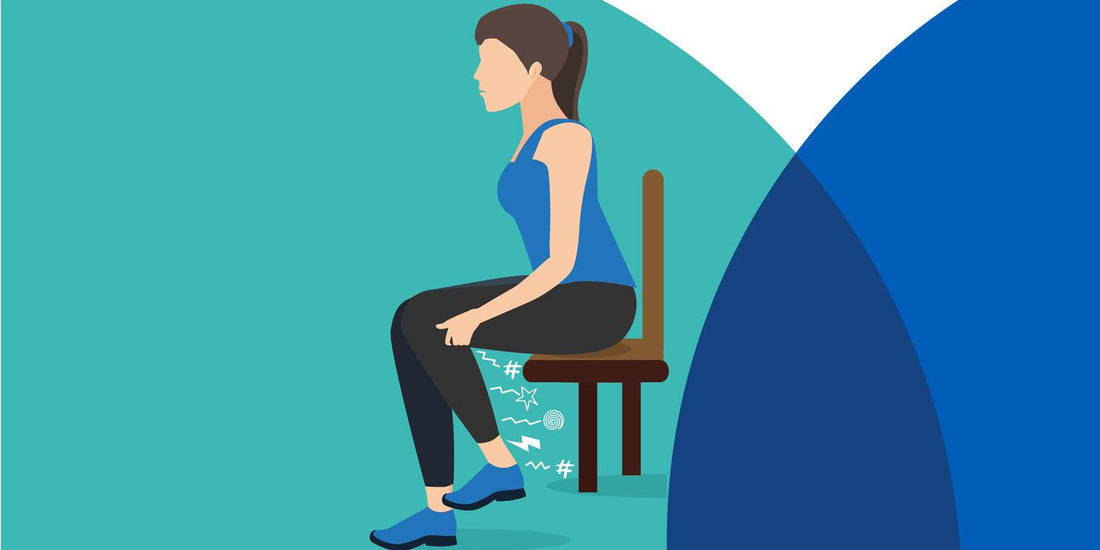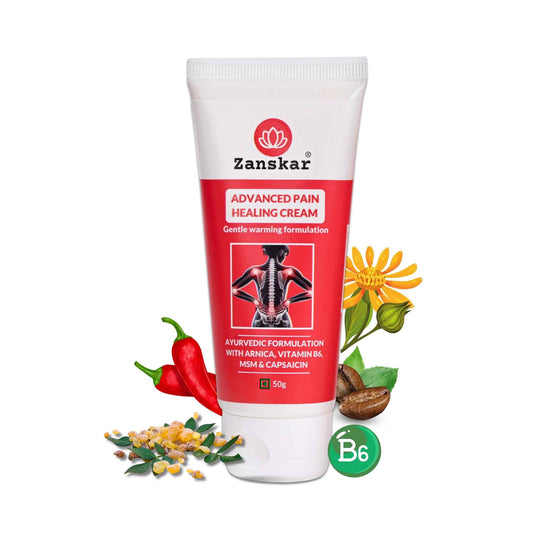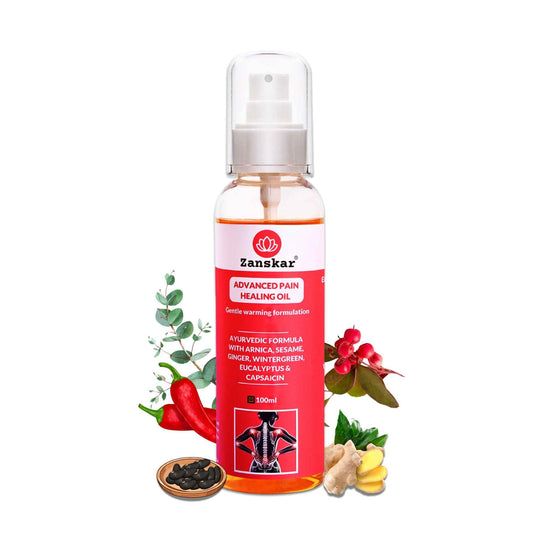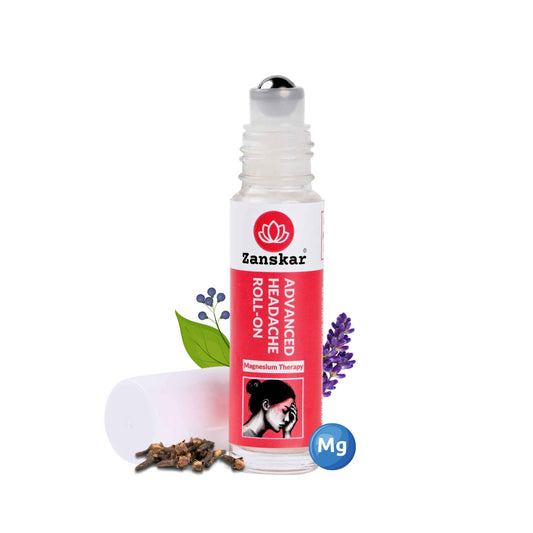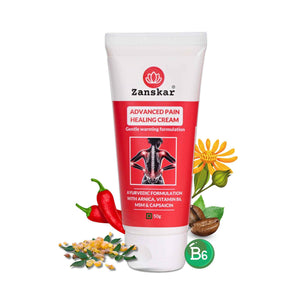
If you’ve ever experienced a sharp pain that shoots from your low back down your leg, you may be accustomed to sciatic pain. Sciatica refers to a host of symptoms that result from irritation to the large nerves which begin in your lower back and supply sensation all the way down to your foot. It’s very common and — although challenging to deal with at times — very likely to be helped by activity, including stretching, strengthening, and cardio exercises.
“There are a lot of different things that contribute to sciatica, and many can be treated with exercise,” says Rashi Goel, PT, a physical therapist at Zanskar Health. That’s why movement is medicine is the mantra of our healthcare team and why Zanskar Health members, including those with sciatica, attest that exercise therapy makes a big difference in their ability to get back to their lives. “Before I started Zanskar Health, I was having almost constant sciatic nerve pain in my right leg,” one member shared with us recently. “Now, I only have that pain every now and then, and when I do have pain it generally goes away with some stretching.”
Here, learn more about sciatica — what causes it, how it feels — and how exercises from our Zanskar Health physical therapists can help prevent it from coming back.
What Is Sciatica?
Sciatica is an irritation of the sciatic nerve, which is the longest nerve in your body, running from your hips into your leg and foot. It sends messages that let you move and feel sensations in your leg.
Sciatica is often isolated to one side of your body, though it can affect both sides. The classic presentation of sciatica is nerve pain that starts in the low back and travels down the entire back of the leg. But sciatic symptoms can occur anywhere along the nerve pathway — in the hip, butt, thigh, knee, or foot. Some people describe sciatica as sharp, shooting, or burning pain. You may experience weakness, tingling, or numbness. Symptoms may be mild or severe, annoying or excruciating.
“Flexion (or forward bending), which stretches the nerve, tends to be more triggering, but everyone’s body is different,” says Dr. Goel. A common scenario: “You bend over to pick something up — say, your toddler — and the nerve tightens up and you get that radiating, electrical pain.”
Is Exercise Good for Sciatica?
When sciatic pain strikes, you may feel inclined to rest as much as possible. And it’s certainly okay to scale back and take it easy for a few days. Ideally, though, you really want to keep moving. Try to stick with your usual activities as much as possible, and do some gentle exercises and stretches since these are the tools that help your body heal best. Yes, it might involve some pain. But, no, that doesn’t mean you’re making the problem worse. In fact, “some sort of movement, whatever that looks like for you, is helpful for a number of reasons,” says Dr. Goel. These include:
• Increased muscle strength. A strong core — the abdominal, back, and pelvic muscles — supports the spine and may take some of the weight off of the surrounding tissues. By engaging and strengthening those muscles, you can help alleviate sciatic pain and prevent it from flaring in the future.
• Reduced stiffness. Exercise can help improve mobility and sensitivity of the sciatic nerve, making it less likely to be a source of pain flares.
Put simply, stretching helps limit pain related to sciatica. “Tight muscles can be problematic for nerves,” explains Dr. Goel. “But stretching your muscles makes it easier for the nerves to move," which can reduce pain. This doesn’t mean that tight muscles always cause nerve pain — or any pain for that matter — but tight muscles can be a factor in your pain if you have a history of sciatica or are experiencing a pain flare currently.
To make the most of your stretching, remember to:
• Warm up with light aerobic activity. If you can’t do warm-up exercises, apply moist heat before stretching.
• Lean into the stretch and hold it. Don’t bounce into the stretch.
• Don’t force a stretch. Some stretches may be uncomfortable, especially at first, but if you are finding that a stretch just causes too much discomfort, even when you modify how you do it, take a break from it for a week and revisit it later.
Stretches to Ease Sciatica
1. Child’s Pose: This stretches your lower back and hamstring muscles while in a restful position

2. Supine Glute Stretch: This is a great stretch for your hamstrings and glutes.“Your arms are doing a lot of the work to hug your knee toward your chest, so you get the benefits of the stretch without stressing your lower back,” says Dr. Goel

3. Hamstring Stretch: Tight hamstrings can pull on your pelvis and increase stress on your lower back, irritating your sciatic nerve. This movement helps alleviate tightness in your hamstrings.

Regardless of where along the sciatic nerve pathway you feel symptoms, these four stretches recommended by Hinge Health physical therapists can help. “They’re very safe, so they offer low risk and high reward,” says Dr. Goel.
Strengthening Exercises for Sciatica
1. Pelvic Tilt: These activate the small muscles deep in your core that provide stability, which helps keep your back strong and resilient1.

2. Glute Bridges: These strengthen your glute, or butt, muscles. If your glutes aren’t strong enough, your low back may have to compensate which can contribute to low back pain and sciatica.

3. Clamshells: These help reduce pain by strengthening the hips, glutes, pelvis, and lower back muscles

In addition to stretching, strengthening exercises are a must if you’re prone to sciatica, says Dr. Goel. Targeting your core muscle can be particularly helpful in easing pain and preventing future flares. “A strong core promotes a strong back, which can help with back and sciatic pain,” says Dr. Goel. To increase muscle strength, give these top exercises recommended by Hinge Health physical therapists a try.
Are Walking and Cardio Good for Sciatica?
Absolutely! “Cardio is going to support your body’s ability to bounce back from an episode of low back pain or sciatica,” says Dr. Goel. Aerobic exercise (e.g., walking, running, cycling — anything that gets your heart rate up) improves blood flow, flexibility, and core strength. These are all key factors in a strong, healthy spine. It also promotes the release of endorphins, your body’s natural pain-relieving chemicals.
Any sort of cardio is a good option. Even if you’re experiencing a sciatic pain flare, it’s still a good idea to keep moving, but maybe scale back from your normal intensity or duration. For instance, if you would normally run two kms, try walking for a few minutes and see how your body copes.
PT Tip: Move Any Way that Feels Comfortable
Although you may assume otherwise, there’s no reason not to exercise with sciatica. It can help relieve a flare and prevent them from recurring. Know that even if you have some pain with movement, you’re still safe to nudge into that pain. As long as you don’t push past unacceptable levels of pain for you, you can feel confident moving any way you want, as long as it feels good to you, notes Dr. Goel.
Learn More About Zanskar Health
If you have joint or muscle pain that makes it hard to move, Zanskar offers the most advanced full stack pain relief solutions for you.
Now available to purchase, Zanskar® Advanced Pain Healing Cream has a unique formulation of natural ingredients like Arnica, Vitamin B6, MSM and Capsaicin, which is trusted by over 20L+ pain sufferers globally. It provides lasting relief from muscle and joint discomfort that you can feel good about. Get your fix before stocks run out - buy now.
You can also gain access to therapeutic exercises and stretches for your condition by downloading the Zanskar Health physiotherapy mobile app. Additionally, you’ll have a personal care team to guide, support, and tailor our program to you, including behavioral and nutritional coaching.
Download our mobile app here 👉 download and track your exercise streak.
Medical Review: This article is written by Dr Nishtha Mittal (Senior Health Content Editor at Zanskar Health) and has been medically reviewed by Dr Rashi Goel (Senior Physiotherapist at Zanskar Health). This article and its contents are provided for educational and informational purposes only and do not constitute medical advice or professional services specific to you or your medical condition.

